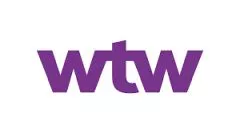The Pensions Regulator today laid before Parliament the new DB Funding Code. Subject to Parliamentary approval this Code will apply to actuarial valuations with effective dates on or after 22 September 2024.
The Pensions Regulator (TPR) has today laid before Parliament its new defined benefit (DB) draft funding code of practice (the Code). Subject to Parliamentary approval this Code will apply to actuarial valuations with an effective date on or after 22 September 2024, sitting alongside the new Funding and Investment Strategy regulations.
The Code follows on from the consultation launched by TPR in December 2022.
TPR has separately published a response to its consultation on its proposed 'twin track' regulatory approach to compliance and the expected parameters of the Fast Track route which some schemes might choose to follow. The final parameters will be published when the final funding code comes into force. It will also communicate more about its 'twin track' regulatory approach at a later date.
The key principles set out in the Code are summarised below. In several areas TPR notes a proportionate approach can be taken, for example depending on scheme size, covenant strength and period to significant maturity. The Code is primarily for scheme trustees and the scheme's sponsoring employer but certain aspects apply to actuaries and will be of interest to covenant and investment consultants. While the Code is not a statement of the law, certain matters have been delegated to the Code (eg the definition of significant maturity). Trustees may choose to follow an alternative approach to that set out in the Code provided they are satisfied the underlying legal requirements are met.
Long term planning
- Low dependency investment allocation: A scheme's low dependency investment allocation (LDIA) must be "highly resilient" to short-term adverse changes in market conditions. In a change from the prescriptive approach in the previous draft, the new draft Code sets out principles for assessing the resilience of the scheme's funding level, recognising that there are different ways in which schemes may assess risk and the support for those risks. It also clarifies that this is a notional investment allocation, supporting the low dependency funding basis actuarial assumptions and it does not interfere with the trustees' power over the scheme's actual investments.
- Low dependency funding basis: TPR has not taken an overly prescriptive approach to the assumptions to be used for the low dependency target. The legislative requirement that "no further (deficit) contributions are expected to be required" should be assessed under all "reasonably foreseeable" scenarios and assumptions should be "chosen prudently" which mirrors some of the wording that has existed in the funding regime since 2005. Dynamic discount rate approaches can be considered as an alternative to a gilts (or swaps) plus a margin approach, where justified by the actual assets held. RPI assumptions must be market consistent with no allowance for an inflation risk premium, and unless the trust deed and rules provide for the employer to meet expenses, an expense reserve should be included. TPR notes that when setting individual assumptions, prudence can and should be considered across the basis in aggregate.
- Significant maturity and relevant date: For schemes with no cash balance benefits, the Code sets out a fixed duration of 10 years for determining when a scheme is deemed to reach significant maturity, based on the assumptions in the low dependency funding basis, but based on investment market conditions at 31 March 2023. Trustees must choose a relevant date for reaching their low dependency funding and investment strategy that is no later than the end of the scheme year in which the scheme is estimated to reach significant maturity by the scheme actuary.
- Employer covenant: The Code defines two aspects of covenant which are relevant: covenant reliability (the period over which there is reasonable certainty over available cashflow to fund the scheme) and covenant longevity (how long the trustees can be reasonably certain that the employer will be able to continue to support the scheme). All trustees must assess covenant but using a proportionate approach and having regard to the size of the scheme relative to the covenant, the level of risk and the scheme's maturity. Detailed covenant guidance will be published separately.
- Journey planning: Trustees must set out a plan for the evolution of the funding and investment strategy over the period to reaching the relevant date. The requirements for the journey plan are considered over two periods – the period of covenant reliability and the period afterwards. For the period of covenant reliability, trustees need to be satisfied that the level of risk is supportable by the covenant and consider in a proportionate matter the impact of risks crystalising and the actions they could take in such situations. At a minimum, the tests should reflect a one-in-six downside over the period and not result in payments that exceed the employer's maximum affordable contributions. De-risking after the reliability period should take into the ability of the employer to support the scheme, contingent asset support and the period to the relevant date.
- Statement of strategy: Detailed requirements are set out in the Code of the content that will need to be covered in the Statement of Strategy and signed on behalf of the trustees by the chair of trustees. Trustees are likely to be reassured by TPR's comment that this information will be treated as confidential.
- Open schemes: In a change from the draft, the Code now includes a separate section dealing with schemes that are open to new entrants and/or future benefit accrual and provides signposts to the relevant material contained throughout the Code. Trustees must "robustly" consider to what extent it is reasonable to assume accrual continues when assessing when the scheme is expected to reach significant maturity and any allowance for new entrants should be evidence based and prudent. The length of period of future accrual/new entrants allowed for must be no longer than the 'covenant longevity' period as defined in the Code.
Application
- Technical provisions: These must be consistent with the scheme's journey plan and assumptions that relate to the period after the relevant date should be the same as or stronger than those used for the low dependency funding basis.
- Recovery Plans: Funding deficits must be recovered as soon as the employer can reasonably afford (but they can also consider whether to allow for post-valuation experience and/or investment outperformance). In assessing what is reasonably affordable, trustees are able to consider "reasonable alternative uses" of employer free cashflow, including investing in sustainable growth, covenant leakage (such as dividend payments) or discretionary payments to other creditors. However, where funding levels are lower, or the period to significant maturity is short, less consideration should be given to the latter two elements, and using resources in this way should not lead to deficit reduction contributions being required beyond the period when available cash is considered reliable. Trustees should also reassess reasonable affordability at least on a year-by-year basis with steps taken to reduce the deficit in line with this assessment.
- Investment and risk management considerations: Trustees must plan to be invested from the relevant date in a low dependency manner, as agreed with the employer, and must formulate a de-risking journey plan. However, the decision on actual investment strategy is for the trustee and the funding and investment strategy requirements do not limit trustees' discretion over investment matters. It has also been clarified that the above does not apply to any surplus assets on a low dependency funding basis. The Code gives examples of situations where it may be justifiable for the actual investment strategy being followed to differ from that set out in the funding and investment strategy. However, TPR expects that in most circumstances the actual investment strategy adopted will be consistent with that set out in the Statement of Strategy.
Other aspects of interest include:
- Schemes where employers have limited affordability: For a small number of schemes a strategy which meets all the requirements of the funding regime may not be possible. TPR sets out the considerations for such schemes, including that it is unlikely to be appropriate for future service benefits to continue accruing, but that some level of unsupportable investment risk might be appropriate.
Summary of key requirements for the 'Fast Track' compliance route
Trustees may elect to use a Fast Track route to demonstrating compliance with the legislative requirements or a Bespoke route. The Fast Track requirements do not form part of the Code, since they do not form part of the legislative approach and merely act as a "regulatory filter". A standalone document will also allow TPR more flexibility to change parameters when required and although it does not expect the parameters to change often it will review them annually at a minimum (eg for changes in market conditions) and will carry out a comprehensive review of the parameters and assumptions underlying them every three years.
If the Fast Track route is followed then trustees can expect less regulatory involvement on DB funding. TPR estimates (as at March 2023) that 62% of schemes meet all of the Fast Track parameters and a further 19% could change their funding approach at no extra cost to do so.
The same Fast Track criteria apply to all schemes without any differentiation by covenant strength and it will be the responsibility of the scheme actuary to confirm to TPR that the Fast Track parameters have been met. The main requirements are:
- Low dependency target – the low dependency target must be calculated using a discount rate no higher than gilts + 0.5% pa and this must be achieved by no later than when the scheme is estimated to reach a duration of 10 years. This can now take into account future accrual of up to nine years. There is also some prescription on other assumptions, including RPI and CPI assumptions, expenses and certain demographic assumptions as well as additional principles-based guidance on other assumptions such as commutation at retirement and other member options.
- Technical provisions – at significant maturity, technical provisions must be at least 100% of the scheme's low dependency target. Before that, technical provisions must be at least a prescribed percentage of the low dependency target. For example, a scheme with a duration of 20 years would be required to have technical provisions equal to a least 83.5% of the minimum Fast Track low dependency target.
- Recovery plan – for schemes not yet at significant maturity, a maximum length of six years from the effective date of the valuation, allowing for a maximum increase in planned deficit contributions each year in line with CPI or a fixed 3% pa (to minimise any 'back-end loading'). The period is reduced to three years for schemes already at significant maturity. No allowance can be made for investment outperformance in excess of the technical provisions discount rate. Allowance can be made for actual post-valuation date experience between the effective date of the valuation and date of finalising the valuation.
- Stress test – the scheme must pass a PPF-style stress test.
There are some practical easements in the requirements for smaller schemes which, for this purpose, has been set at the level of 200 or fewer members.
The content of this article is intended to provide a general guide to the subject matter. Specialist advice should be sought about your specific circumstances.




